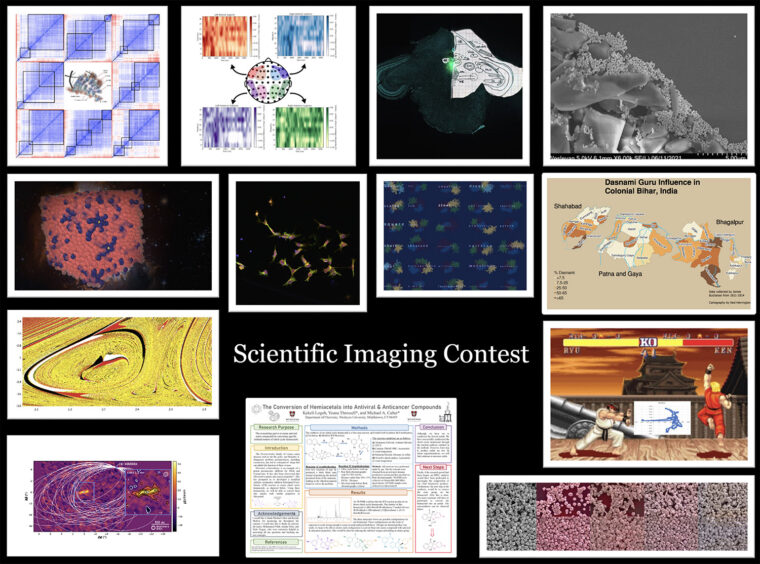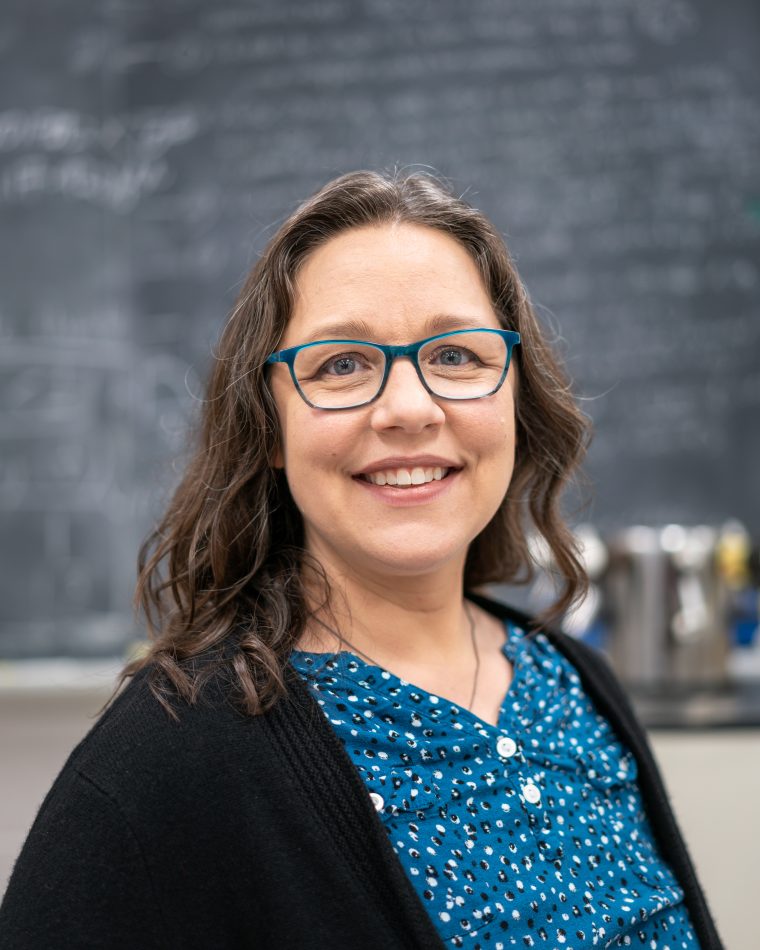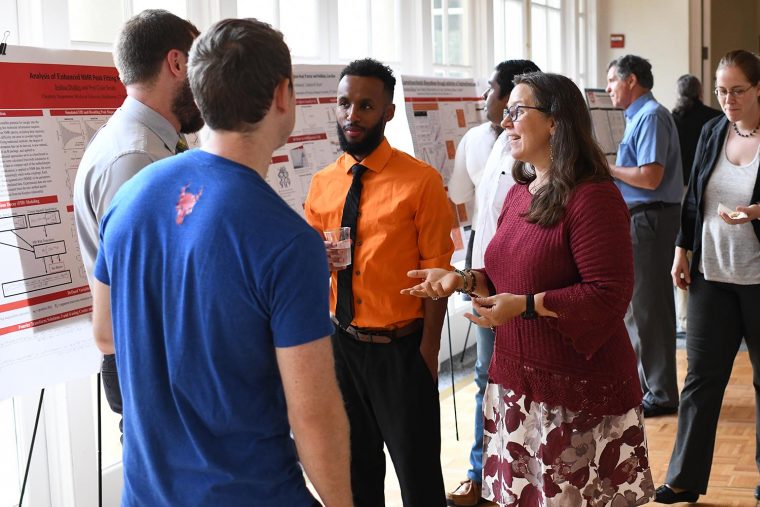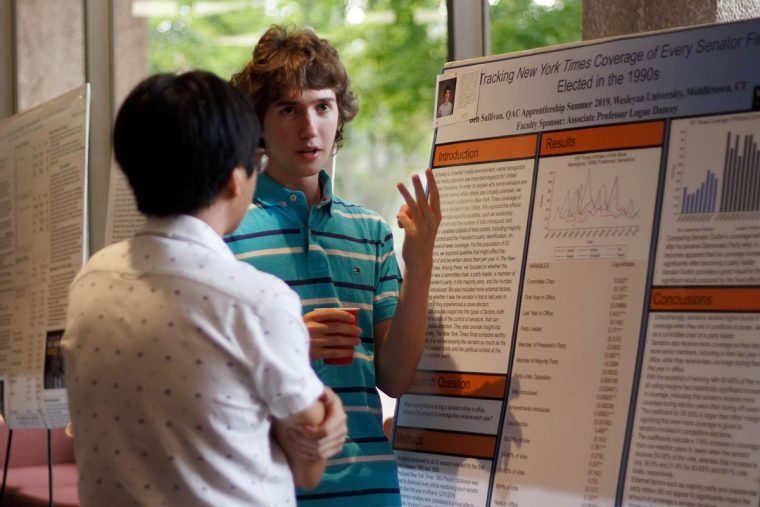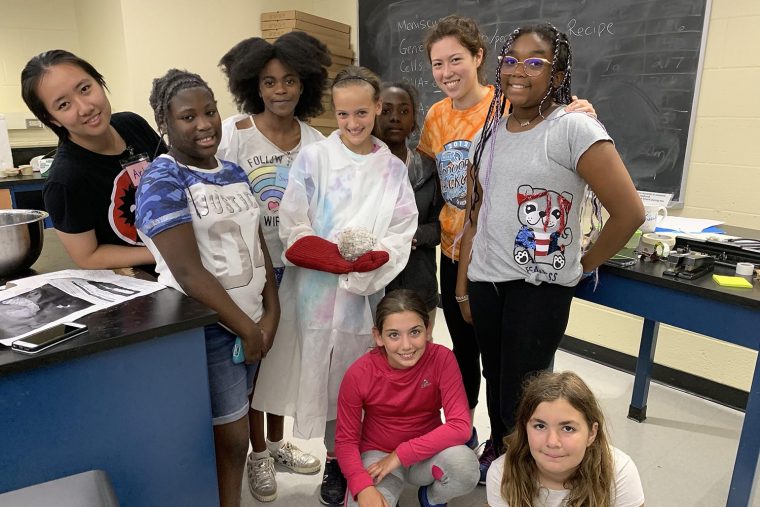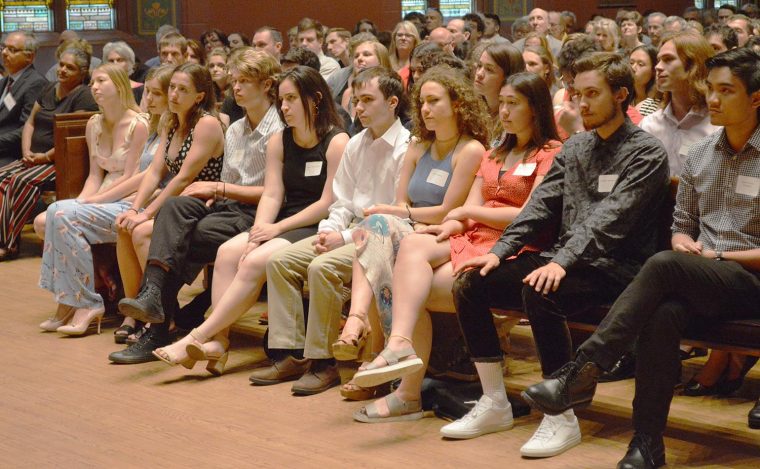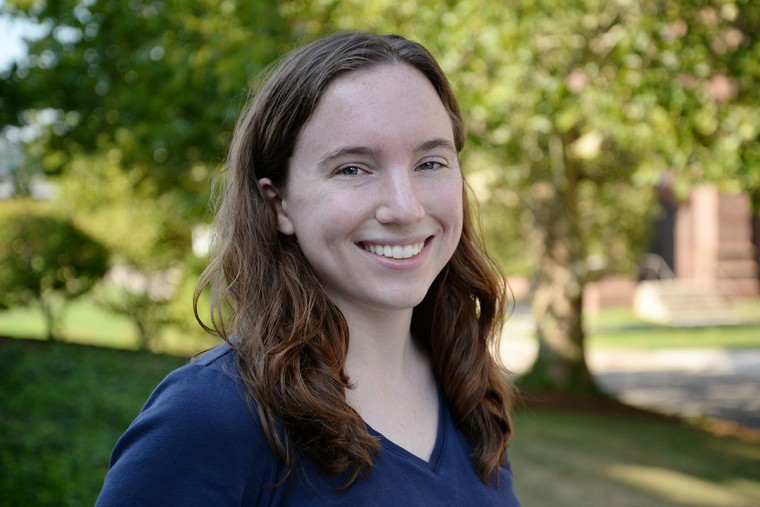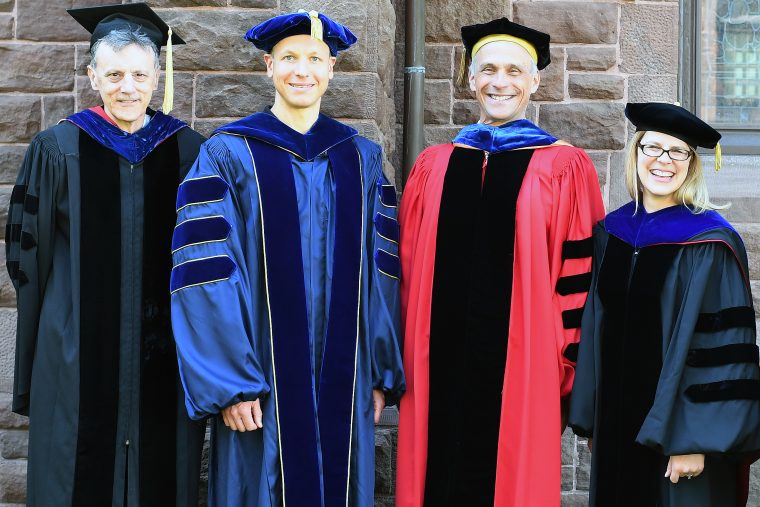At first glance, a viewer sees a single image of pink-tinted cubes, resembling a bacteria culture from high school biology. But upon closer examination, the viewer begins to see a series of other shapes—triangles to hexahedrons to tetahexahedraons (cubes with four-sided pyramids on each face). "If you stare at this image for a while, you can see that it's actually a series of five images in the top row, and five images on the bottom row, and each of these images show us nanoparticles that are made of gold and copper," said Brian Northrop, professor of chemistry. "It's intriguing, captivating,…
When launching spacecrafts and missiles, small navigational mistakes could lead to catastrophic results. A satellite could spin completely out of orbit, a missile could mistakenly strike a civilian territory, or a spaceship could end up at another planet altogether. Three Wesleyan researchers are collaborating on the development of a novel sensor that would benefit navigation and several other applications. The new, hypersensitive acceleration sensor is based on a principle borrowed from nuclear physics and has been developed at Wesleyan. It provides enhanced sensitivity and precision compared to conventional sensors. "Our underlying concept can be applied in a variety of sensing…
Erika Taylor, associate professor of chemistry, recently co-authored three papers and a book chapter related to (1) biomass to biofuel production and (2) development of new therapeutics to treat Gram-negative bacterial infections. Taylor's work investigates problems at the biological chemistry interface and seeks to find applications of her work to the fields of medicine and sustainable energy. Her chapter called “Lignin Enzymology – Recent Efforts to Understand Lignin Monomer Catabolism” in the book Comprehensive Natural Products III: Chemistry and Biology, and her paper “Identifying Metabolic Pathway Intermediates that Modulate Enzyme Activity: A Kinetic Analysis of the DesB Dioxygenase from Sphingobium…
Joy Cote PhD ’18, Cody Hecht '18, MA'19, and Erika Taylor, associate professor of chemistry, are the co-authors of a study that explores how opposite charges on our substrate and enzyme cause a protein to change shape when the substrate binds. The study, titled "Opposites Attract: Escherichia coli Heptosyltransferase I Conformational Changes Induced by Interactions between the Substrate and Positively Charged Residues," appears in the February 2020 issue of Biochemistry. "If you can imagine how the opposite charges of magnets are attracted toward each other, then you understand the results of this paper," Taylor explained. "The enzyme uses positively-charged amino…
Erika Taylor, associate professor of chemistry, is honored for being among the "Top 35 Women in Higher Education" in the March 20 issue of Diverse. Taylor joined the Wesleyan faculty in 2007 and teaches courses in the areas of organic chemistry, biochemistry, environmental chemistry, and bio-medicinal chemistry, among others. She's also associate professor, environmental studies, and associate professor, integrative sciences, and takes a multidisciplinary approach to investigating problems at the biological chemistry interface. Diverse acknowledged Taylor for "striv(ing) to find ways to exploit enzymes found in nature to perform reactions that can help advance the fields of chemistry and medicine."…
On Sept. 26, the Molecular Biophysics Program hosted its 20th Annual Molecular Biophysics Retreat at Wadsworth Mansion in Middletown. Several Wesleyan faculty, students, and guests attended the all-day event, which included five talks, two poster sessions, and a reception. Lila Gierasch, Distinguished Professor of Biochemistry and Molecular Biology and Chemistry at the University of Massachusetts, Amherst, delivered the keynote address, titled "Hsp70s: Allosteric Machines that Perform a Multitude of Cellular Functions." Gierasch, a leader in the field of protein folding, is a newly elected member of the National Academy of Sciences. Her work focuses particularly on folding in the cell…
The Summe Program for Research in the Sciences culminated with a research poster session in the lobby of Exley Science Center, with more than 100 students participating. The program, held May 29 to July 26, was open to frosh, sophomores and juniors currently enrolled at Wesleyan. Wesleyan science faculty members served as mentors for student research in their laboratories. In addition to the closing poster session, the students participated in weekly seminars and workshops, a symposium, and various social events. After the poster session, students displayed their posters in the hallways outside the introductory biology laboratories. (more…)
In this recurring feature in The Wesleyan Connection, we highlight some of the latest news stories about Wesleyan and our alumni. Wesleyan in the News 1. Inside Higher Ed: 'Safe Enough Spaces' President Michael Roth is interviewed about defending free speech, inclusion on campus, and affirmative action, among other topics, in connection with the forthcoming publication of his new book, Safe Enough Spaces: A Pragmatist's Approach to Inclusion, Free Speech, and Political Correctness on College Campuses, due out Aug. 20 from Yale University Press. 2. The New York Times: "The World's Smartest Chimp Has Died" William Griffin Professor of Philosophy Lori Gruen writes in…
(Story by Kerisha Harris) For the sixth year in a row, the weeklong Wesleyan Girls in Science Summer Camp welcomed dozens of middle school-aged girls for a week of learning, exploration, and STEM-centered fun. From Aug. 5-9 inside Exley Science Center, the 32 campers in grades 4-6 spent the week learning about everything from how to extract DNA from a strawberry, to the parts of the brain, and even how to make (but don’t touch) an ice-cold comet. By Friday, the young scientists were excited to share all they had learned with their friends and families, and did so through a poster presentation and…
On May 25, members of the Class of 2019 were inducted into Wesleyan’s Gamma Chapter of Phi Beta Kappa Society, the oldest national scholastic honor society. The Wesleyan Gamma Chapter was organized in 1845 and is the ninth-oldest chapter in the country. To be elected, a student must first have been nominated by the department of his or her major. The student also must have demonstrated curricular breadth by having met the General Education Expectations and must have achieved a GPA of 93 and above. Phi Beta Kappa is the oldest surviving Greek letter society in America, founded in December…
Michelle Personick, assistant professor of chemistry, has been selected by the Leadership Council of the Interactive Online Network of Inorganic Chemists (IONiC) to participate in a National Science Foundation–funded study to develop, test, and refine a flexible, foundation-level inorganic chemistry course. As a Virtual Inorganic Pedagogical Electronic Resource (VIPEr) Fellow, Personick joins 17 other inorganic chemists from across the country in a community of practice dedicated to improving student learning. The 2018 VIPEr Fellows are the first faculty who have been selected for this groundbreaking project. The study, titled “Improving Inorganic Chemistry Education,” is being conducted with support from the National…
Every year at Commencement, Wesleyan recognizes three outstanding teachers with Binswanger Prizes for Excellence in Teaching. These prizes, made possible by gifts from the family of the late Frank G. Binswanger Sr., Hon. ’85, underscore Wesleyan’s commitment to its scholar-teachers, who are responsible for the University’s distinctive approach to liberal arts education. Recommendations are solicited from alumni of the last 10 graduating classes, as well as current juniors, seniors, and graduate students. Recipients are chosen by a selection committee of faculty and members of the Alumni Association Executive Committee. This year, during the 187th Commencement ceremony, Wesleyan honored the following…


